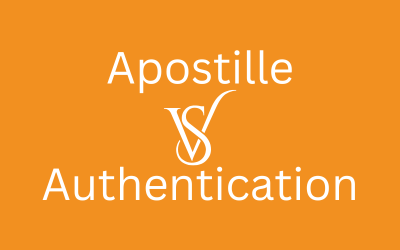Ready to hire? Becoming an employer is a big responsibility. One of your primary tasks is to pay and withhold the correct employment taxes, and you’re accountable for explaining that process to your employees. Here’s what you need to know about breaking down paycheck withholdings and deductions for your employees.
Getting Started With the W-4 Form
The first payroll document your employees must complete is the Internal Revenue Service (IRS) tax Form W-4 (Employee’s Withholding Certificate). The W-4 helps your employees determine how much federal tax withholding will be applied to their paychecks.
Some important data points for helping employees complete their W-4:
- Explain that federal income tax rates are progressive and vary by wage and filing status. So as an employee’s taxable income increases, their tax rates increase. There are currently seven federal income tax brackets: 10%, 12%, 22%, 24%, 32%, 35%, and 37%.
- An individual’s federal income tax liability can be reduced by tax deductions and tax credits, which provide benefits to specific types of taxpayers.
- Because the Tax Cuts and Jobs Act (TCJA) significantly changed the federal income tax system, the IRS issued a redesigned W-4 in 2020. So make sure you download the redesigned form to offer new employees and not use an outdated form.
- The new form has different steps and calculations based on how an employee files taxes (single, married filing jointly, married filing separately, or head of household).
- There are also different steps for employees with multiple jobs and/or if their spouses work.
- Finally, there are also calculations for dependents for employees who want to withhold more money due to earning additional income or withhold less due to exemption status.
Once a new employee fills out Form W-4 and you, as the employer, fill out the company information (including your Employer Identification Number) and then you or your accountant enter the data into your payroll system. As an employer, the IRS requires you to keep a copy of every employee’s W-4 for four years.
Quick Note: If the IRS determines that an employee has not claimed enough withholding, your company will be issued a “lock-in” letter that specifies how much more withholding is required.
Dissecting the Paycheck
A typical paycheck is divided into five sections: pay period, gross pay, deductions, taxes, and the summary.
1. Pay Period
The pay period is at the top of the stub for easy reference. Depending on how often your employee is paid (weekly, bi-monthly, or monthly), the exact dates of the period are printed at the top.
2. Gross Pay
The paycheck stub indicates the current gross amount being paid and the amount they’ve been paid year-to-date (YTD). In the case of hourly workers, the number of hours and rate of pay are shown. Gross earnings are the amount paid before any employee paycheck withholdings, or employee paycheck deductions are taken out.
3. Deductions
Your employee may or may not have employee paycheck deductions listed in this section. Typically, payroll deductions such as health insurance, retirement account contributions, child support payments, and any wage garnishments required by the IRS will be listed in this section.
Deductions are taken before payroll taxes are calculated. Sometimes employees are confused about the difference between deductions vs. withholdings. Deductions are taken out pre-tax for benefits and/or required donations. Employee paycheck withholdings are the required taxes taken each time an employee is paid.
4. Taxes
The amount of money withheld for federal and state taxes is indicated here. Two amounts shown on the paycheck stub will include the amount withheld on the current paycheck and the amount withheld YTD.
- Federal Taxes
- The W-4 form mentioned above will help your employees determine how much federal tax withholding will be applied to their paychecks.
- By paying federal taxes, Americans are underwriting the infrastructure of the country. For example, tax dollars pay for highway upkeep, national defense, law enforcement, social programs, healthcare, education, maintaining the National Parks, etc.
- An individual’s federal income tax liability can be reduced by tax deductions and tax credits, which provide benefits to specific types of taxpayers.
- FICA (Federal Insurance Contributions Act)
- All U.S. taxpayers must contribute taxes to Social Security and Medicare. Some paychecks show FICA as one total amount; others break it down by program.
- Social Security
- All employees and employers pay a percentage of their gross wages to fund Social Security.
- When you retire, you start getting a monthly check from the federal government. The amount is based on how much money you made while you were working.
- Many people mistakenly think the “full retirement age” (the age you can start collecting the full amount of Social Security you’ve paid into the system) is 65. It’s not—if you were born in 1960 or later, the full retirement age is 67.
- The Social Security tax is 6.2% of gross income. Both employer and employee contribute that percentage.
- However, there is a taxable wage maximum every year. This year, your contributions end when you’ve earned more than $160,200.
- Medicare
- Medicare is a federal health insurance program for people 65 or older and some certain younger people with disabilities.
- The primary purpose of Medicare is to cover most of the person’s hospital and medical (doctor’s appointments, etc.) expenses.
- The Medicare tax is 1.45% of gross income. Employers and employees contribute to Medicare, and there is no income cap for the Medicare tax.
- State and Local Taxes
- Depending on where your employee works (not where the business is located) you may also be required to withhold state and local taxes.
- Some states have no state income tax but may have municipality or transportation taxes, for example.
- Employers must register to submit payroll taxes in each state where employees conduct business. Typically, registration is completed through the state’s Department of Revenue.
- Every state invests its tax dollars differently, but typically state taxes pay for everything from education, health care, public safety, highway and road maintenance, environmental protection, state police, etc.
- In addition, you must pay a State Unemployment Insurance tax (SUI) in the state where the employee conducts business. SUI rates vary by state.
5. Summary
The final section contains the paycheck summary showing the current and year-to-date amounts in wages, taxes, deductions, and net pay. The net income is the amount your employee receives after employee paycheck withholdings and employee paycheck deductions.
When Do-Overs are Needed
Tell your new hires that withholdings aren’t set in stone. Employees can change their withholdings by filling out another W-4. They should review this process with their accountants before making any changes. Some deductions can also be changed; for example, the employee may change health insurance plans during open enrollment.
As the employer, you must be available to your team to explain their paychecks so any disputes can be avoided.
Need to Register for Payroll Taxes?
CorpNet can quickly register your new business for state payroll taxes. Our specialists manage the process of registering your new business for State Unemployment Insurance Tax (SUI) and State Income Tax (SIT), which saves you time and money.





